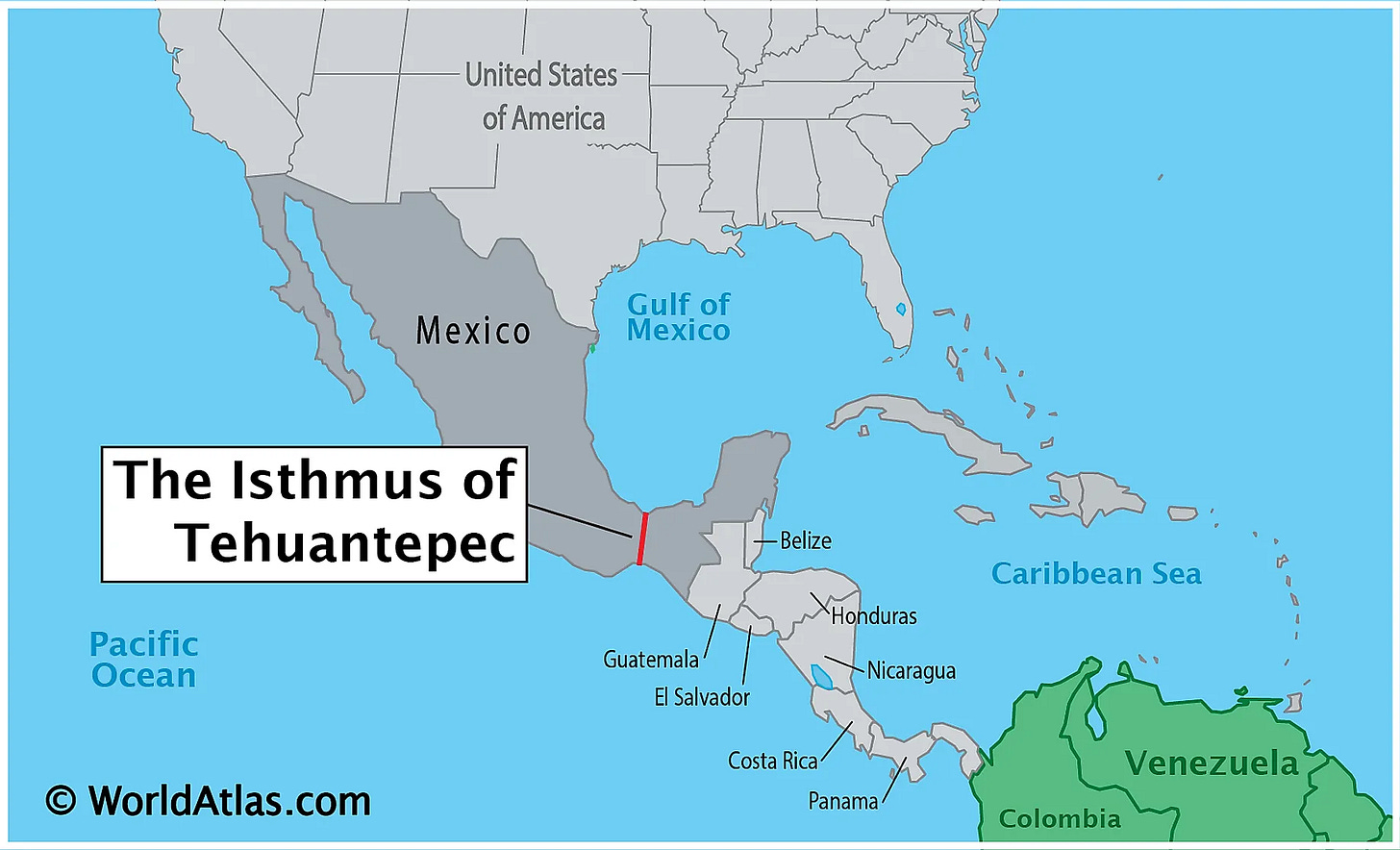That Midnight Train To Coatzacoalcos
Mexico's Trans-Isthmus Railway
In 2022, over 14,000 ships crossed the Panama Canal. 40% of goods transported from Northeast Asia to the U.S. East Coast passes through the canal. But there is a problem: Gatun Lake, a rain-fed reservoir in Panama, the water from which is used to float ships through the Panama Canal's lock system, is experiencing record low water levels, the result of years of draught brought on by climate change.
The lack of water in Gatun Lake means that the canal's operators need to restrict the number of ships that can traverse the canal. Currently, 160 ships are waiting near the entrance to the canal for passage - the average wait time to make the crossing? 21 days.
Couple this with the up to 500,000 USD it costs ships to use the canal, and the shipping industry is in the worst shape it has been in in decades. And the expectation is that conditions at the canal are only going to get worse.
Since opening in 1914, the remarkable engineering marvel that is the Panama Canal has dramatically reduced the time it takes a ship to travel between the Atlantic and Pacific oceans. Before the canal was created, ships would have to travel around the southern tip of South America to make this trans-oceanic crossing, a lengthy and dangerous journey due to the almost constant storms and wild confluence of currents that occurs on Cape Horn, the southernmost point of South America. The importance of the Panama Canal to international trade cannot be overstated. Nor can the negative impact to trade that will occur as a result of the canal's thirst for a dwindling water supply.
The Isthmus of Tehuantepec to the rescue
The isthmus of what now? The Isthmus of Tehuantepec is the narrowest part of Mexico's land mass. It runs between the port city of Salina Cruz, Oaxaca on the Pacific to the port city of Coatzacoalcos, Veracruz on the Atlantic, and is only 303 kilometers (188 miles) wide:
Oh, so Mexico is digging their own canal?
No. Digging canals across continents is extremely expensive, time-consuming and logistically fraught (we're looking at you, Panama Canal). Instead, Mexico is well on the way to completing a railroad across the Isthmus of Tehuantepec. A railroad upon which electric trains will travel. These electric trains will pull long lines of container cars from the Pacific to the Atlantic (and vice versa). Here's the idea: container ships will pull into port at Salina Cruz and Coatzacoalcos. They'll unload their containers onto rail cars. These rail cars will then zip across the isthmus to the alternate port, where a waiting container ship will load the containers and continue to carry them to their final destination port. No Panama Canal needed. No hazardous Cape Horn crossings.
Mexico's bold isthmus rail project will transport containers from the Pacific to the Atlantic in less than 6 hours (crossing the Panama Canal takes a container ship 8 to 10 hours, plus all those weeks of waiting for their turn). Mexico expects to transport 1.4 million containers annually, and in the process introduce thousands of jobs to the traditionally poor and un-industrialized southern Mexico region.
Even though those 1.4 million containers represent a fraction of the container traffic that traverses the Panama Canal, the Isthmus of Tehuantepec rail project is a win-win for Mexico and overseas transport. Mexico estimates that revenue generated from the project and related industries along the rail corridor will eventually represent 5% of its GDP.
Mexico will start testing the rail lines in September of this year, with a completion date for the entire project expected sometime in 2024. As the R&B group The Impressions would say: people get ready, there's a train a comin'.





A win for business and associated jobs for sure.
I'm curious what the ecological impact of this project was/is. As I'm sure you are aware Mike, some of the largest intact old growth sub-tropical rainforests and healthy riparian river systems on Earth are not too far from the isthmus.
That's great news. More choices, more work, and a way to get emergency goods through when the Panama Canal isn't an option for the faster transport times sometimes urgently needed. I didn't know about this and am happy to hear it, as I did know about the issues in Panama.